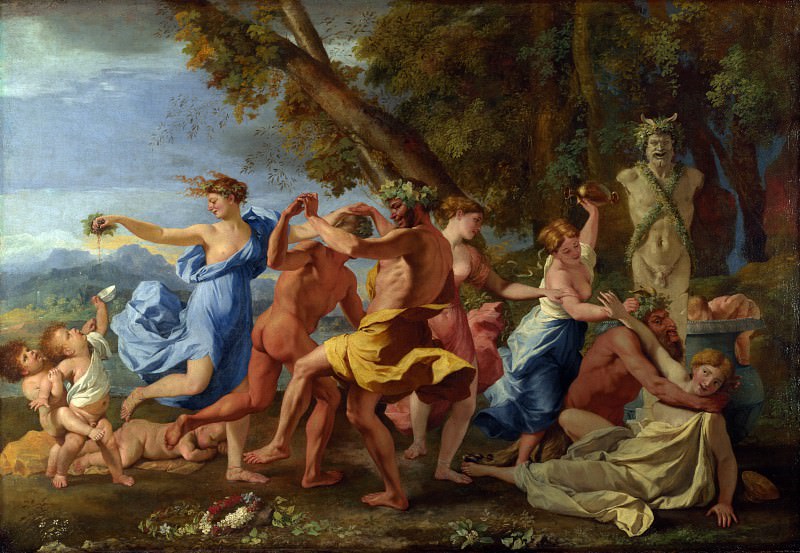A Bacchanalia Nicolas Poussin (1594-1665)
Nicolas Poussin – A Bacchanalia
Edit attribution
Image taken from other album: gallerix.org/s/1152601724/N/109309991/
Download full size: 6117×4226 px (9,2 Mb)
Painter: Nicolas Poussin
Location: National Gallery, London.
Nicola Poussin’s bright, colorful painting Bacchanalia, memorable for its images, painted in a romantic-mythological style, is now in the London Picture Gallery. The main characters of this marvelous painting are young, carefree creatures who are strangers to physical labor. These colorful gods have fun, dance and amuse themselves around their deity named Pan and placate him. In Greek mythology it is the patron saint of shepherds, forests, and fields.
Description of Nicolas Poussin’s painting Bacchanalia
Nicola Poussin’s bright, colorful painting Bacchanalia, memorable for its images, painted in a romantic-mythological style, is now in the London Picture Gallery.
The main characters of this marvelous painting are young, carefree creatures who are strangers to physical labor. These colorful gods have fun, dance and amuse themselves around their deity named Pan and placate him.
In Greek mythology it is the patron saint of shepherds, forests, and fields. In the Renaissance it is the deity of debauchery. He is often depicted with a goat’s face and a human body.
The painting does not depict people at all. The author of this painting depicted gods, sirens, fauns, to whom all is permitted. This is the fun that the gods are used to seeing every day. It is their habitual, everyday business that they do not live without.
These merry gods live in an unreal world where there is no sadness and longing, but unrestrained merriment and revelry. If you look closely at the picture, all those who have fun and drink in full do not get drunk. This is a characteristic of humans, but not of divine beings.
Poussin’s Bacchanalia is foreign to debauchery; it is simply an excerpt from the all-permitted life of divine beings. There is nothing vulgar here. It is a depiction not of the realistic, but of the mythological, joyful life of the gods who rule the world and govern the people on earth.
The painting is a bit like Titian’s masterpiece of the same name. There is also a child here on the right, next to the nymph and the faun. The nymph sits on a goat. The baby has small feet and is most likely the son of the goat (Pan) and at the same time a kind of deity.
The picture, thanks to the bright, juicy colors, is positive. It creates a good mood. This is how the French painter Nicolas Poussin saw the Bacchante dance and the Bacchanalian process itself. It was his era and his worldview.
Кому понравилось
Пожалуйста, подождите
На эту операцию может потребоваться несколько секунд.
Информация появится в новом окне,
если открытие новых окон не запрещено в настройках вашего браузера.
You need to login
Для работы с коллекциями – пожалуйста, войдите в аккаунт (open in new window).




















You cannot comment Why?